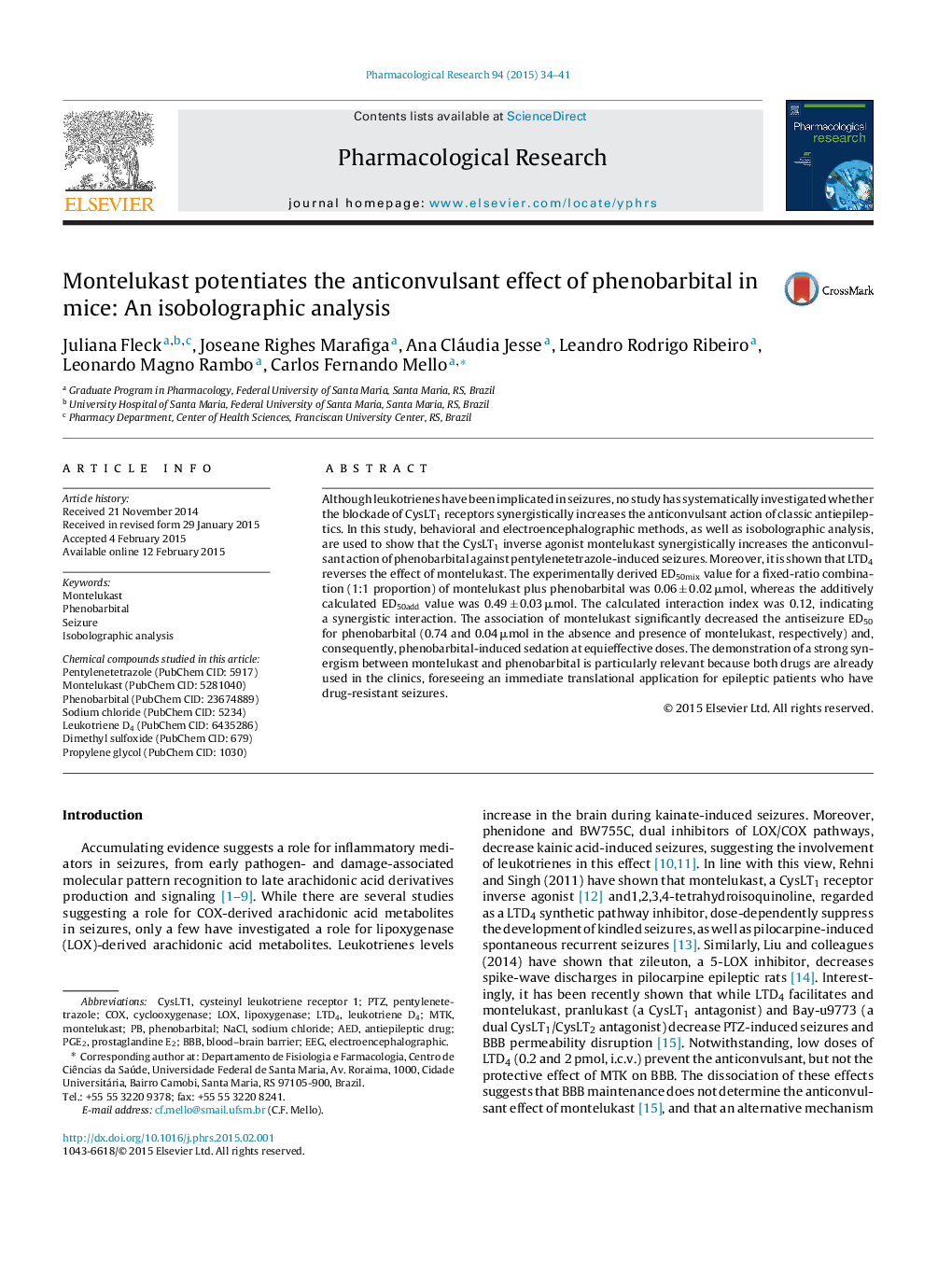| Article ID | Journal | Published Year | Pages | File Type |
|---|---|---|---|---|
| 2562092 | Pharmacological Research | 2015 | 8 Pages |
Although leukotrienes have been implicated in seizures, no study has systematically investigated whether the blockade of CysLT1 receptors synergistically increases the anticonvulsant action of classic antiepileptics. In this study, behavioral and electroencephalographic methods, as well as isobolographic analysis, are used to show that the CysLT1 inverse agonist montelukast synergistically increases the anticonvulsant action of phenobarbital against pentylenetetrazole-induced seizures. Moreover, it is shown that LTD4 reverses the effect of montelukast. The experimentally derived ED50mix value for a fixed-ratio combination (1:1 proportion) of montelukast plus phenobarbital was 0.06 ± 0.02 μmol, whereas the additively calculated ED50add value was 0.49 ± 0.03 μmol. The calculated interaction index was 0.12, indicating a synergistic interaction. The association of montelukast significantly decreased the antiseizure ED50 for phenobarbital (0.74 and 0.04 μmol in the absence and presence of montelukast, respectively) and, consequently, phenobarbital-induced sedation at equieffective doses. The demonstration of a strong synergism between montelukast and phenobarbital is particularly relevant because both drugs are already used in the clinics, foreseeing an immediate translational application for epileptic patients who have drug-resistant seizures.
Graphical abstractMontelukast (MTK) potentiates the anticonvulsant effect of phenobarbital (PB). Isoboles and EEG traces of the combination of drugs show a synergistic anticonvulsant effect.Figure optionsDownload full-size imageDownload high-quality image (137 K)Download as PowerPoint slide
